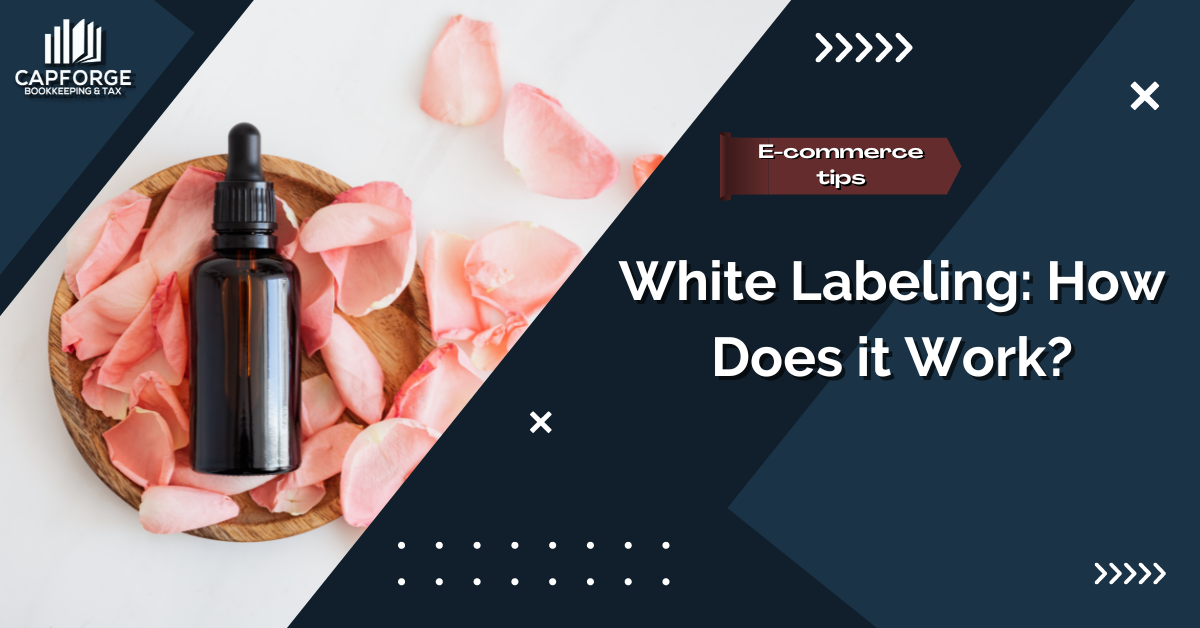White Labeling: How Does it Work?
So you’ve heard about white labeling from one of your friends as their next great business venture, and you’re eager to learn more about how it works. The concept is pretty straightforward: source a product from a manufacturer, slap your logo on it, and boom! You now have a legitimate product with your brand name ready to sell to the market.
It might seem like an effortless endeavor, but there are a couple of intricacies involved when white labeling products. If you want to become successful with this business model, you’ve come to the right place! This article will discuss the basics of white labeling to help you start your entrepreneurial journey.
What is white labeling?
White labeling refers to rebranding a product or service created by a manufacturer and selling it under your brand name. This type of business model allows brands to leverage the expertise and resources of third-party providers, making it easier to introduce a product to the market.
The process starts with the brand selecting a white-label provider that offers its desired product or service. The brand then adds its logo, design, and packaging to the product before selling it to the market. Through this process, businesses can enjoy greater flexibility with their product range without investing in product development.
Once the rebranding is complete, the brand takes charge of marketing and distributing the white-labeled product to its target audience.
For example, say you want to start a fragrance company, but you don’t have the resources to perform complex perfume compositions. You can opt to contact a manufacturer that offers white-label fragrances, rebrand them, and sell them as your product.
What are the advantages of white labeling?
White labeling presents plenty of advantages to budding entrepreneurs who want to dip their toes in the e-commerce realm. If you’re planning on selling white-label products, here are a couple of benefits to know about:
1. Introduce a product to the market quickly
Partnering with a white-label provider allows companies to reduce the time required to bring a new product or service to market. Instead of investing resources in research, development, and production, businesses can leverage the expertise of the white-label provider, who has already created a market-ready solution.
2. Cut down on product development costs
White labeling eliminates the need for businesses to invest in costly infrastructure, equipment, or specialized talent. The partnering company can focus on marketing and distribution, while the white label provider takes care of the product or service development. This cost-sharing arrangement can result in significant savings and improved profitability.
3. Diversify your brand’s offerings
For businesses looking to expand their brand portfolio or enter new markets, white labeling provides an excellent opportunity. Through white-labeled products or services, companies can extend their brand reach without diluting their core offerings. This allows them to cater to different customer segments and diversify their revenue streams.
4. Obtain a tried-and-tested product to sell
Partnering with a white-label provider allows companies to tap into specialized expertise and resources. The white-label provider is often a specialist in their field, with extensive knowledge and experience in developing high-quality products or services. This collaboration enables the partnering company to deliver exceptional value to its customers without the need for in-house expertise.
5. Foster customer loyalty
White-labeled products or services provide an avenue for companies to strengthen customer loyalty. By offering additional solutions that complement their core offerings, businesses can enhance customer satisfaction and build long-term relationships. This, in turn, can lead to increased customer retention and higher lifetime value.
How do you get started with white labeling?
Now that we understand the concept and benefits of white labeling, let’s explore the step-by-step process of implementing it effectively:
Step 1: Define Your Target Market and Product Requirements
Before diving into white labeling, it’s crucial to identify your target market and understand their needs and preferences. Conduct market research to determine which products are in demand and align with your brand’s image and values.
Define the specific features, quality standards, and packaging requirements that your white-labeled product should possess to meet your customers’ expectations.
Step 2: Identify Potential Suppliers or Manufacturers
Research and identify potential suppliers or manufacturers who can meet your product requirements. Look for reliable and reputable partners who have a track record of delivering high-quality products and have experience in white labeling.
Seek out recommendations, read reviews, and request samples or prototypes to assess their capabilities firsthand.
Step 3: Negotiate Terms and Establish Agreements
Once you’ve selected a suitable supplier or manufacturer, negotiate the terms of your white-label agreement. Discuss pricing, minimum order quantities, delivery schedules, and any additional services you may require, such as custom packaging or labeling.
Ensure that both parties are clear on expectations and responsibilities by drafting a comprehensive agreement that outlines the terms and conditions of the white-label arrangement.
Step 4: Customize the Product to Reflect Your Brand
Work closely with your supplier or manufacturer to customize the product according to your brand’s specifications. This may include designing the packaging, selecting colors and fonts, and incorporating your brand logo or labeling.
Ensure that the product aligns with your brand’s aesthetics and communicates your unique value proposition effectively.
Step 5: Quality Control and Testing
Before launching your white-labeled product, conduct rigorous quality control and testing procedures. This step ensures that the product meets the desired standards and performs as intended. Test for functionality, durability, safety, and any other relevant factors specific to your product. Address any issues or concerns with your supplier or manufacturer and iterate on improvements if necessary.
Step 6: Develop Marketing and Sales Strategies
As your white-labeled product nears completion, develop comprehensive marketing and sales strategies to promote its availability. Determine the pricing strategy, target distribution channels, and promotional activities that will help you reach your desired customer base effectively.
Craft compelling product descriptions and engage in targeted marketing campaigns to generate awareness and drive sales.
Step 7: Launch and Monitor Performance
Launch your white-labeled product with a well-executed marketing campaign. Monitor its performance closely by tracking sales, customer feedback, and market trends.
Collect valuable insights that can inform future iterations and improvements to maximize your product’s success.
Step 8: Provide Ongoing Support and Customer Service
Maintain a strong relationship with your supplier or manufacturer to ensure ongoing support and timely deliveries. Additionally, establish a robust customer service system to address inquiries, issues, and warranty claims from your customers promptly. Proactive customer support is crucial for building trust and loyalty in your brand.
Conclusion
White labeling offers businesses a valuable opportunity to enter the market quickly with their own branded products, benefiting from the expertise and resources of established manufacturers or service providers.
Embrace this strategy, and you’ll be well-positioned to meet the demands of your target market while building a strong brand presence.
Managing the financial health of your business is crucial to its success. If you need any help with expert bookkeeping services, our team is ready to assist you. Feel free to fill out the form below, and we’ll get in touch with you shortly.







